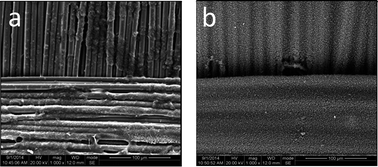Intergrowth charring for flame-retardant glass fabric-reinforced epoxy resin composites
Abstract
An interfacial intergrowth charring method is designed and employed in glass fabric-reinforced epoxy resin composites. Unlike the traditional bulk-charring flame resistance mode in which phosphorus flame retardants distributed in a resin matrix catalyze resin to independently form a char layer that does not readily combine with glass fabric, the interfacial method grafts a reactive phosphorus flame retardant on a glass fabric surface, and the grafted glass fabric is then compounded with epoxy resin to obtain interfacial flame-retardant composites. At the combustion temperature, the acids from the flame retardants carbonize the interfacial resin and produce an intergrown char layer (the char grows up from the glass fiber surface) that closes the inherent gaps and grids of the glass fabric. In this means, the chemically produced char combines with the glass fabric, i.e., the natural non-combustible physical barrier in the composites, to construct a sealed and compact fire proof shield. This shield, composed of glass fabric frameworks and char fillings, exerts a much greater isolating effect on flammable volatiles, oxygen and combustion heat than independent chemical char layers formed in bulk mode, thus showing significantly improved flame retardance relative to the latter with the same flame retardant content. Additionally, interfacial mode avoids the stress concentration caused by flame-retardant particles directly dispersed in resin and hence can endow the composites with excellent mechanical properties.


 Please wait while we load your content...
Please wait while we load your content...